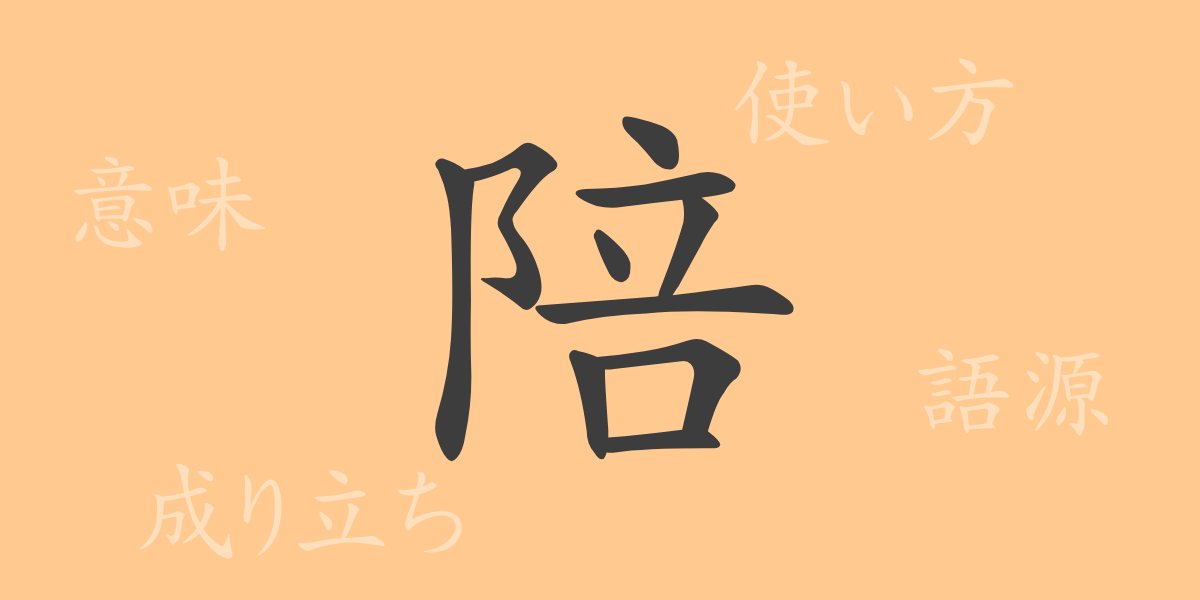The richness of the Japanese language is characterized by its complex and beautiful writing system. Among these elements, kanji hold a particularly deep history and significance. In this article, we will focus on one of Japan’s commonly used kanji, “陪(ばい),” exploring its origins and how it is used in modern times. Let’s examine how this unique character functions within the context of the Japanese language, with its distinctive sound and form.
The Origins of 陪(ばい) (Etymology)
The kanji “陪(ばい)” has evolved from ancient Chinese pictographs. Originally derived from the character “卑(ひ),” which depicts a person standing to the side, it carries the meaning of “accompanying” or “being alongside.” Over time, “陪(ばい)” came to signify “being present” or “accompanying,” and today, it is frequently used in legal and formal contexts.
The Meaning and Usage of 陪(ばい)
The primary meanings of “陪(ばい)” are “to accompany” and “to be present with,” often used in formal settings, rituals, or legal contexts. For example, “陪審(ばいしん)” refers to jurors in a trial, “陪席(ばいせき)” means attending alongside someone in an official capacity, and “陪問(ばいもん)” describes visiting a sick person, with a connotation of showing concern.
How to Read, Stroke Count, and Radical of 陪(ばい)
The kanji “陪(ばい)” is structured with specific readings and writing elements in Japanese.
- Reading: The on’yomi reading is “バイ,” with no specific kun’yomi reading.
- Stroke Count: “陪(ばい)” consists of 16 strokes.
- Radical: The radical is “阜(こざとへん)” or “阝(こざとへん).”
熟語(Jukugo)、慣用句(Kanyōku)、ことわざ(Kotowaza) with 陪(ばい) and Their Meanings
熟語(Jukugo) and 慣用句(Kanyōku) containing “陪(ばい)” deepen its meaning. Here are a few examples:
- 陪審(ばいしん): Jurors who, together with a judge, deliver verdicts in trials.
- 陪席(ばいせき): Sitting beside a key figure at a formal event or meeting.
- 陪臣(ばいしん): A retainer who serves alongside a lord.
- 陪見(ばいけん): Accompanying someone while observing or viewing something.
Summary of 陪(ばい)
The kanji “陪(ばい)” has consistently carried the meanings of “accompanying” and “being present” from its origins to modern usage. It is often found in legal contexts or formal settings, embodying nuances of social roles and human relationships. Its usage in Japanese is deeply connected to cultural backgrounds, highlighting the depth of the language. Through this exploration, we hope you have gained a sense of the unique beauty and functionality of the kanji “陪(ばい).”

























